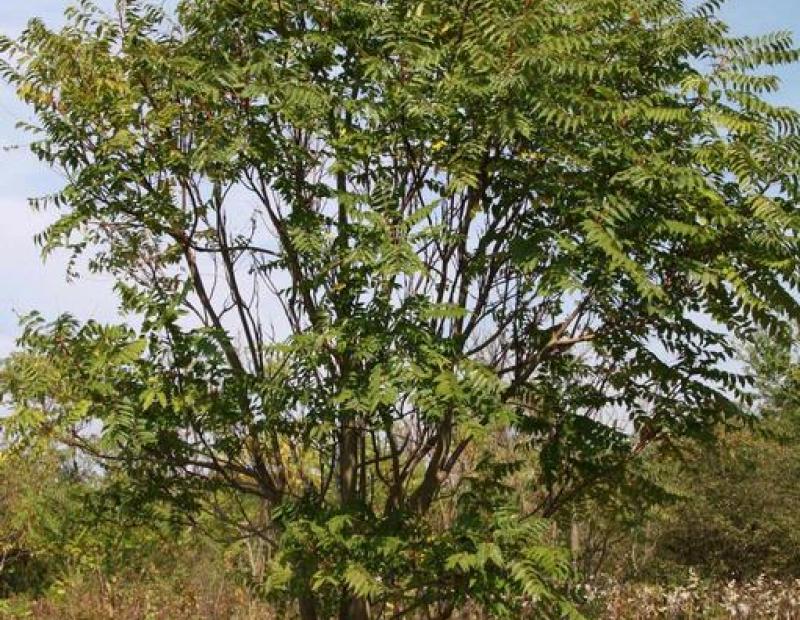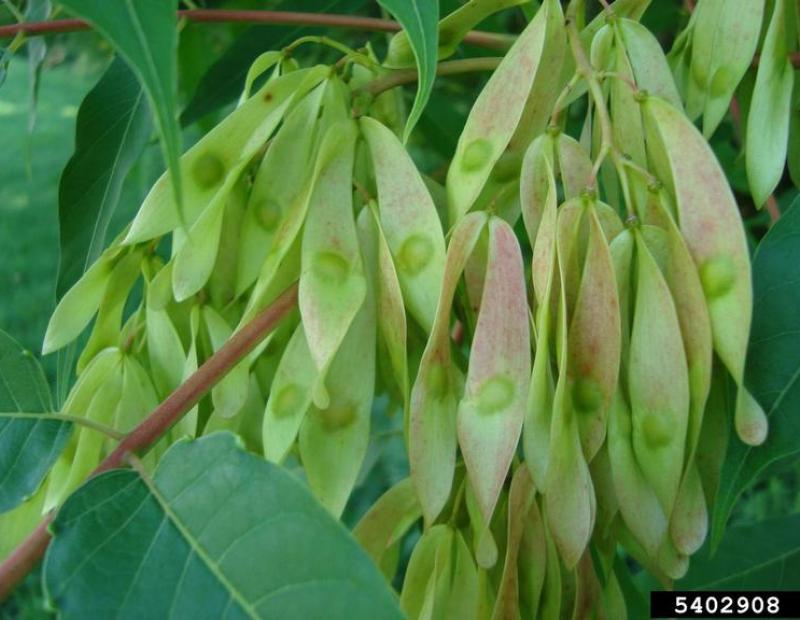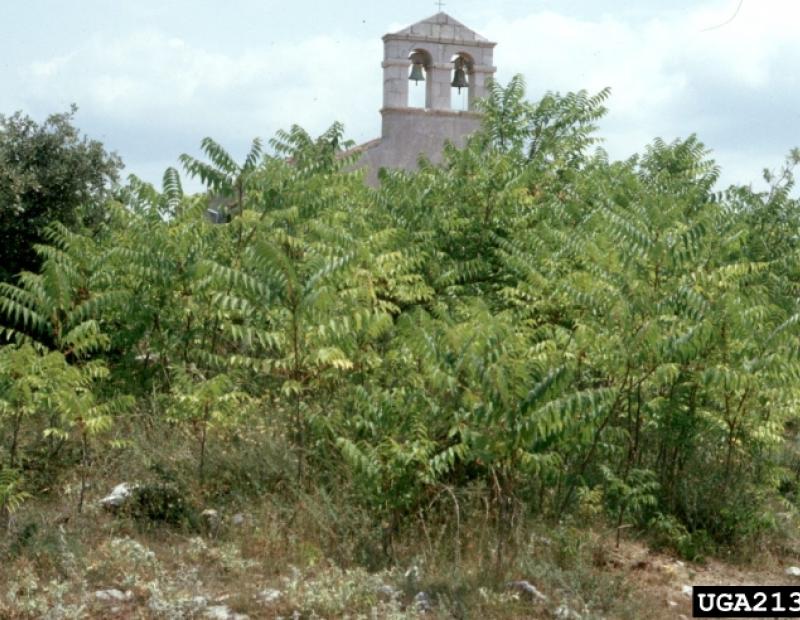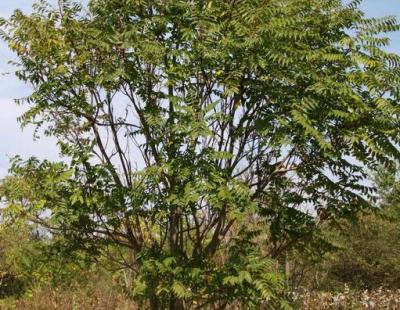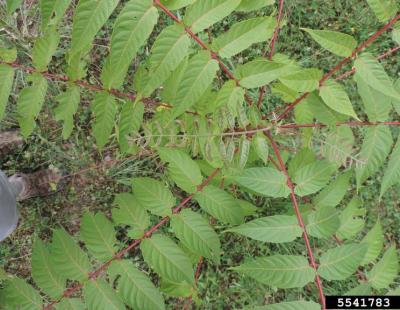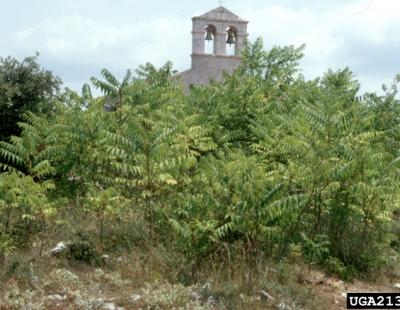- Terrestrial Plants
- Tree
Tree-of-heaven overtakes native vegetation and displaces native trees by forming thickets in dense stands in a variety of ecosystems. It is a hardy plant and can grow in a wide variety of soil conditions, from urban settings to open woodlands. An opportunistic species, it has been observed to grow in the cracks of stone, patios, sidewalks and near building foundations and have been observed to damage sewer systems.
The root systems are allelopathic- toxins produced by the tree prevent the establishment of other plant species. As the leaves degrade, they release a compound toxic to other plants, furthering their own establishment.
Tree-of-heaven is a prolific seed producer and rapid grower; as a result, it has established populations throughout most of the United States. It colonizes by vegetative sprouts and spreads by wind and water-dispersed seeds. Established trees produce numerous suckers from the roots and resprout from cut stumps and root fragments.
This tree also has human health impacts. Often people have allergic reaction to the pollen of the tree-of-heaven. The sap can also cause a rash on some people, and prolonged exposure with broken skin can cause serious health reactions including increased heart rate and chest pain, sometimes requiring hospilization.
The tree-of-heaven is native to China and was intodruced into the United States in 1751. These trees were planted in many urban areas because they're fast growing, resistant to pollution, and provide shade. Tree-of-heaven can be seen in a wide range of environments, including forest edges, forests, shrublands, thickets, and is especially prominent in man-made or disturbed habitats.
The leaves of the tree are large and compound with no teeth along the edge of the leaf blade. There is often a small lobe at the base of the leaf which is a diagnostic characteristic. When completely mature, they can grow to be up to 80 ft. in height. The tree stems are smooth and are pale grey to black in color. All of the tree, but especially the flowers, has a strongly offensive odor similar to peanuts or cashews. The yellow-greenish flowers bloom in June and can be seen in dense clusters near the end of the upper stem. The winged pink to tan fruits, called samaras, form in September and October and hold a single seed. An individual tree can produce up to 325,000 seeds per year.
Tree-of-heaven is widespread throughout the Lower Hudson Region. This tree is well adapted to various habitats, excluding wetlands and shaded areas. It can be found in disturbed soils, fields, roadsides, fencerows, woodland edges, forest openings and rocky areas.

